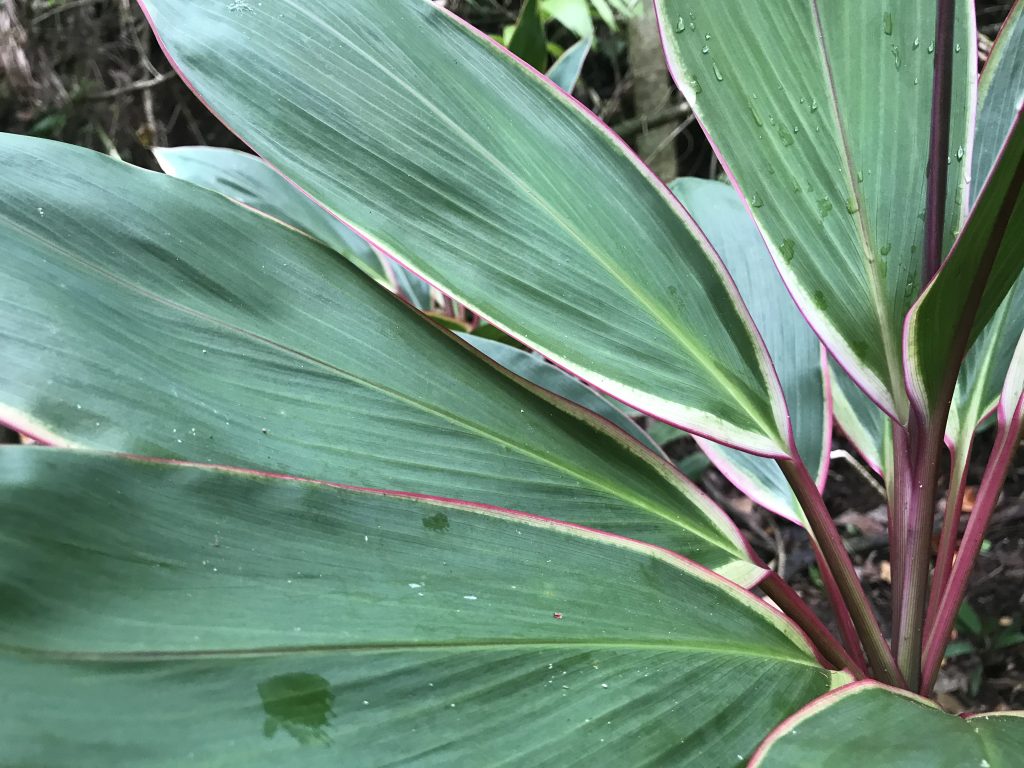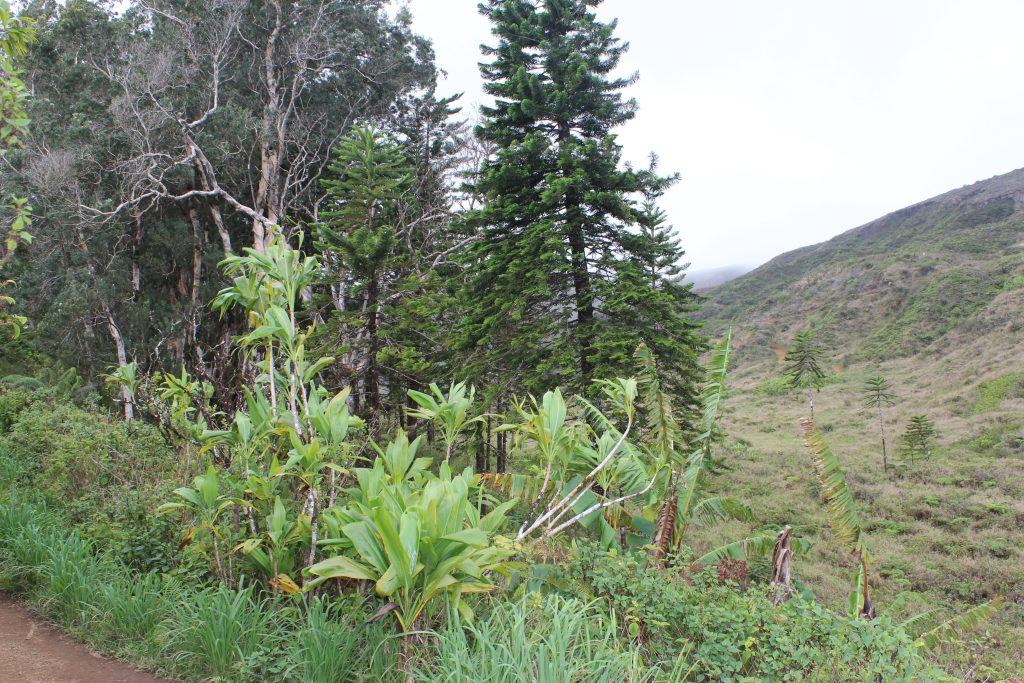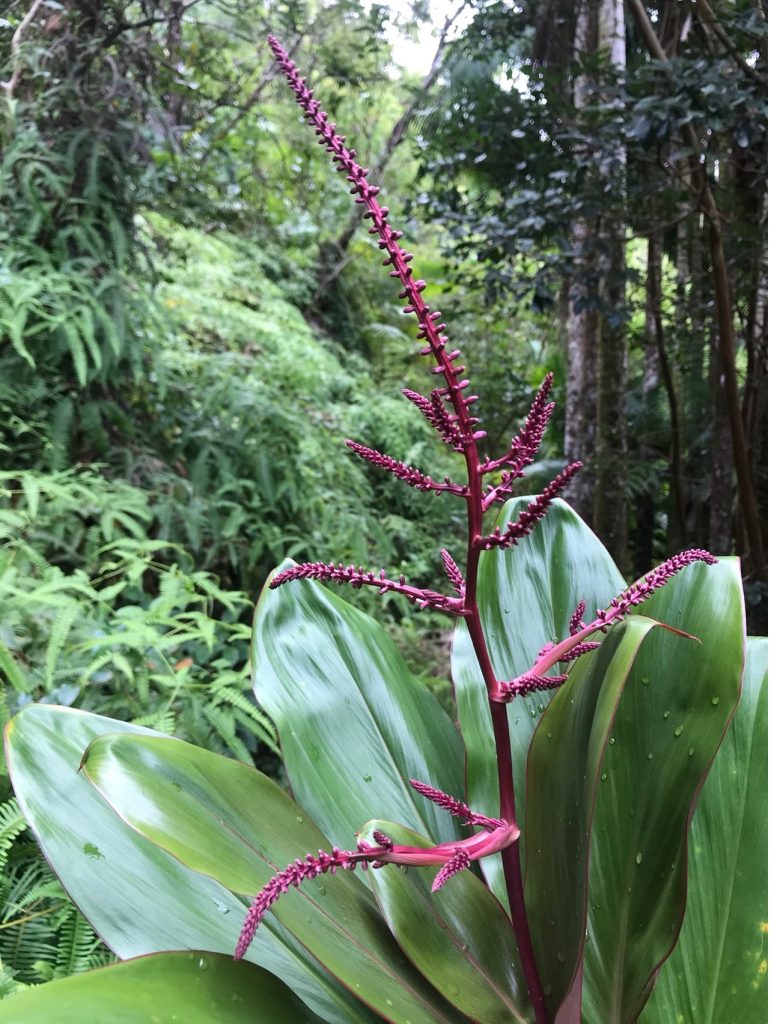ʻŌhiʻa ʻai

Names
- ʻŌlelo Hawaiʻi: ‘Ōhi’a ‘ai
- English: Mountain apple
- Scientific: Syzygium malaccense
Species Information
The trees grow to about 80 feet and are grayish brown. The leaves are somewhat leathery and elliptic. The flowers are bright purplish red or rarely white and made of many stamens. The berries are pink to red, turning maroon, and rarely whitish. The fruit is crisp and watery (Wagner and Lorence, 2015). The bark and root of the tree can be made into a reddish-brown dye (Krauss, 1993). Leaves can be crushed and ingested for bronchitis (Abbott, 1992). The wood can be used for posts, house rafters, and bowls (Wagner et al., 1990).
Distribution
The native range for S. malaccense is uncertain but generally considered to be in the Old World tropics in the Malesian region. It has been widely cultivated and naturalized pantropically (Morton, 1987).
Habitat
It occurs most commonly in mesic valleys at low elevations at mesic to wet sites mesic to wet sites between 200–1000 ft. The tree flourishes in deep mountain valleys and humid areas where there is plentiful rainfall (Wagner et al., 1990).
Photos
References & Additional Resources
- Abbott, Isabella Aiona. Lā’au Hawai’i : Traditional Hawaiian Uses of Plants. Bishop Museum Press, 1992.
- Krauss, Beatrice H. Plants in Hawaiian Culture. Honolulu: University of Hawaii Press, 1993.
- Morton, Julia Frances. “Fruits of warm climates.” (1987).
- Wagner, Warren L., Derral R. Herbst, and S. H. Sohmer. Manual of the Flowering Plants of Hawai’i. University of Hawaii Press, 1990.
- Wagner WL, Lorence DH. Flora of the Marquesas Islands website. Washington DC, USA: Smithsonian Institution, 2015. http://botany.si.edu/pacificislandbiodiversity/marquesasflora/index.htm



